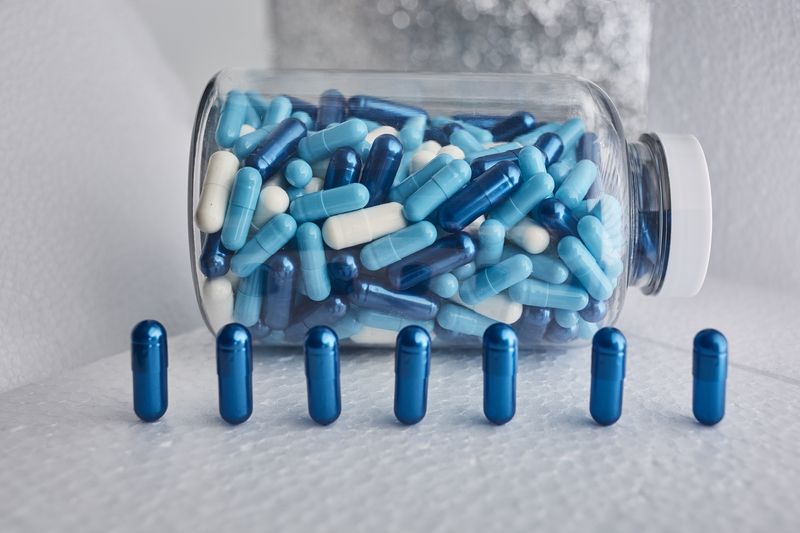Methylene Blue has gained attention for its various uses, from scientific research to potential health benefits. However, amid the rising interest, questions about its safety persist. In this blog post, we’ll dive into the facts and fiction surrounding Methylene Blue, considering its uses, benefits, and potential risks to better understand whether it’s safe for you
What is Methylene Blue?
Methylene Blue is a synthetic dye that has been used for various medical purposes, including treating certain conditions and serving as a biological stain in laboratories. Its history dates back to the late 19th century, and it has been utilized in fields ranging from medicine to dyeing textiles.
What truly sets Methylene Blue apart is its fascinating role in medicinal chemistry. Originally recognized for its vibrant blue color, it quickly transitioned to a valuable therapeutic agent. This compound not only serves as a dye but also participates in cellular processes, showcasing its versatility in enhancing therapeutic applications.
As we begin to understand more about this unique compound, it’s essential to highlight that Methylene Blue is FDA-approved for specific medical uses, including treating methemoglobinemia—a rare blood condition. It’s during this exploration of its benefits that the compound’s significance becomes apparent, propelling its presence into the limelight of modern medicine.
Historical Uses and Application
Historically, Methylene Blue has been used in the treatment of malaria, as an antiseptic, and even in cases of methemoglobinemia, a condition where blood does not properly release oxygen. This section will explore these historical applications and how they tie into the modern understanding of the compound.
Delving deep into its past, Methylene Blue was first synthesized in 1876 and quickly found its way into various medical applications. Its effectiveness as a dye initially overshadowed its potential as a treatment. This section highlights how it was utilized in the fight against diseases, showcasing its adaptability in diverse environments—from hospitals to laboratories.
Interestingly, Methylene Blue’s role in the medical arena expanded further when scientists recognized its properties as a treatment for infections. In the early 1900s, hospitals began using this compound for various purposes, making it a staple in medicinal practices. Understanding this evolution provides a rich context for its current applications and the promising benefits it holds today.
Exploring the Benefits of Methylene Blue
Recent studies have suggested that Methylene Blue could offer cognitive benefits, enhance mitochondrial function, and even protect against neurodegeneration. We’ll discuss the latest research findings to highlight the promising aspects of Methylene Blue.
The exploration of Methylene Blue as a nootropic has garnered attention within the biohacking community. Many enthusiasts tout its ability to boost mental clarity and memory. Indeed, preliminary research indicates that it may aid in mitochondrial efficiency, leading to improved energy production in cells. This is particularly relevant for those looking to optimize their cognitive performance.
In addition to cognitive enhancements, Methylene Blue is attracting interest for its potential anti-aging properties. With its role as an antioxidant, it may provide protection against oxidative stress—a critical factor in age-related decline. Discussions surrounding these benefits are emerging, making it essential to dissect the science behind these claims thoughtfully.
Moreover, various case studies have shown that patients using Methylene Blue report improvements in mood and resilience. By understanding how it interacts with our cellular machinery, we begin to grasp its multifaceted benefits, leading us to an exciting horizon within the realm of longevity and wellness.
Potential Risks and Side Effect
As with any substance, Methylene Blue is not without its risks. From allergic reactions to interactions with other medications, understanding the potential side effects is essential. This section will delve into the various risks associated with its use.
The narrative surrounding Methylene Blue is often clouded by cautionary tales about possible adverse effects. While many individuals tolerate it well, some may experience side effects ranging from mild to severe, including headaches, gastrointestinal discomfort, and skin reactions. Acknowledging these risks is vital for making informed decisions about its intended use.
One of the more concerning aspects of Methylene Blue involves its interaction with certain medications, particularly those affecting serotonin levels. The potential for serotonin syndrome exists, specifically when combined with other serotonergic medications. Thus, understanding individual health conditions and current medication regimens is crucial for safe usage.
Myths and Misconceptions About Methylene Blue
With popular interest, various myths about Methylene Blue have emerged. This section aims to debunk common misconceptions and clarify the scientific facts, helping readers separate truth from fiction.
One pervasive myth is that Methylene Blue is a dangerous neurotoxin that should be avoided at all costs. This misconception stems from misinterpretations of its effects and has been propagated by unverified sources. In reality, when used appropriately, Methylene Blue can be a supportive tool rather than a harmful substance.
Additionally, many people are unaware that the doses used in functional medicine are significantly lower than those associated with severe side effects. Emphasizing the importance of dosage highlights the disconnection between sensational claims and the reality of safe usage under professional guidance.
Consulting with Health Professionals
Before considering Methylene Blue for any health purpose, it’s important to consult a healthcare provider. In this section, we’ll discuss why professional guidance is vital and what questions to ask when discussing Methylene Blue with doctors.
Engaging in an open dialogue with your healthcare provider can clarify many uncertainties surrounding Methylene Blue. Inquiring about potential benefits, risks, and interactions with current medications provides a comprehensive approach to your health. This collaborative effort not only fosters a deeper understanding but promotes informed decision-making.
Patients should feel encouraged to express their desires for exploring Methylene Blue as an option. When armed with knowledge, individuals can better advocate for themselves in discussions with their healthcare providers. By asking informed questions, you can help ensure that your treatment plan is tailored to your unique health needs.
Final Thoughts on Methylene Blue Safety
In conclusion, while Methylene Blue has promising applications, it’s crucial to approach its use with caution. Always consult healthcare professionals before starting any new treatment involving this compound. Understanding both the science and the myths around Methylene Blue will empower you to make informed and safe choices.
















One Response
What i don’t understood is actually how you are not really much more well-liked than you might be now. You’re very intelligent. You realize therefore considerably relating to this subject, made me personally consider it from a lot of varied angles. Its like men and women aren’t fascinated unless it is one thing to do with Lady gaga! Your own stuffs nice. Always maintain it up!